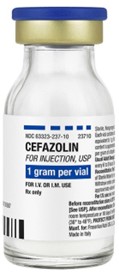A nurse is collecting data from the guardian of a toddler during a well-child visit. The guardian expresses concern to the nurse because his child has a poor appetite, but drinks a quart of milk each day.
The nurse should identify that this practice places the toddler at risk for which of the following conditions?
Celiac disease
Lactose intolerance
Acute renal failure
Iron-deficiency anemia
The Correct Answer is D
Nursing Test Bank
Naxlex Comprehensive Predictor Exams
Related Questions
Correct Answer is ["D"]
Explanation
Swimming is a low-impact sport that minimizes the risk of injury and joint stress, making it an ideal choice for children with hemophilia. It provides a cardiovascular workout without subjecting the child to excessive physical stress or the risk of trauma that could lead to bleeding. Swimming also promotes muscle strength and coordination without putting significant pressure on the joints.
Now, let's discuss why the other options are not recommended:
a.Basketball
Basketball involves physical contact and has a higher risk of falls, collisions, and potential injuries. These factors increase the likelihood of bleeding episodes for individuals with hemophilia
b.Gymnastics
Gymnastics also carries a high risk of falls, joint stress, and potential injuries. The impact and demanding movements involved in gymnastics can pose a significant risk for children with hemophilia, leading to bleeding complications.
c.Soccer
Soccer is a contact sport that involves running, kicking, and potential collisions with other players. The physical demands and unpredictable nature of the game increase the risk of injury and subsequent bleeding for individuals with hemophilia.
In summary, swimming is the most suitable sport for a school-age child with hemophilia due to its low- impact nature and minimal risk of injury. It promotes physical fitness while minimizing the likelihood of bleeding episodes and joint stress.
Correct Answer is C
Explanation
The nurse should clarify the prescription for cefazolin with the provider. Cefazolin is a cephalosporin antibiotic, and there is a risk of cross-reactivity in individuals who have an allergy to penicillin.
a) Doxycycline and b) Vibramycin (which is another name for doxycycline) are tetracycline antibiotics and are not related to penicillin.
d) Gentamicin is an aminoglycoside antibiotic and is also not related to penicillin.

Whether you are a student looking to ace your exams or a practicing nurse seeking to enhance your expertise , our nursing education contents will empower you with the confidence and competence to make a difference in the lives of patients and become a respected leader in the healthcare field.
Visit Naxlex, invest in your future and unlock endless possibilities with our unparalleled nursing education contents today
Report Wrong Answer on the Current Question
Do you disagree with the answer? If yes, what is your expected answer? Explain.
Kindly be descriptive with the issue you are facing.
